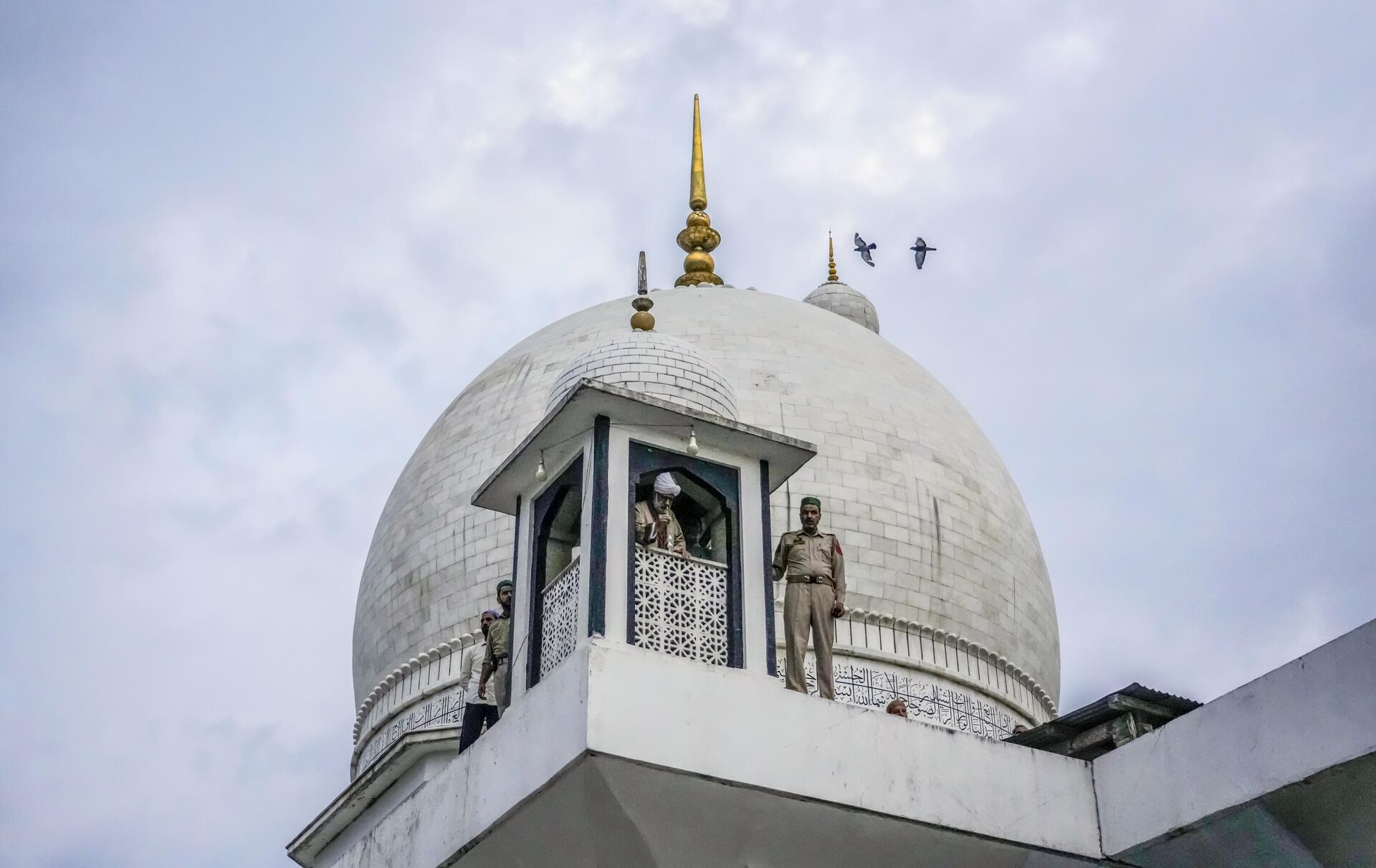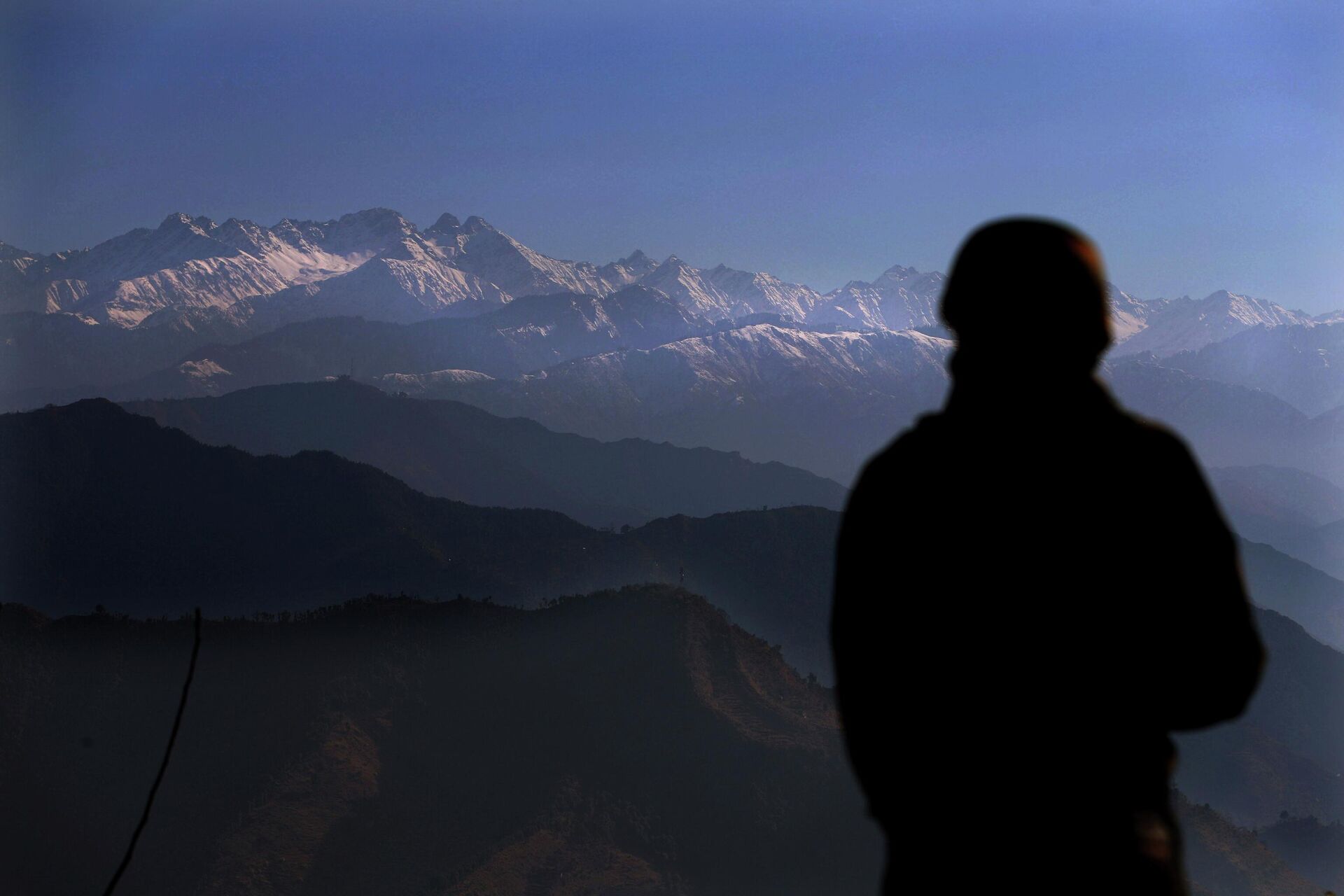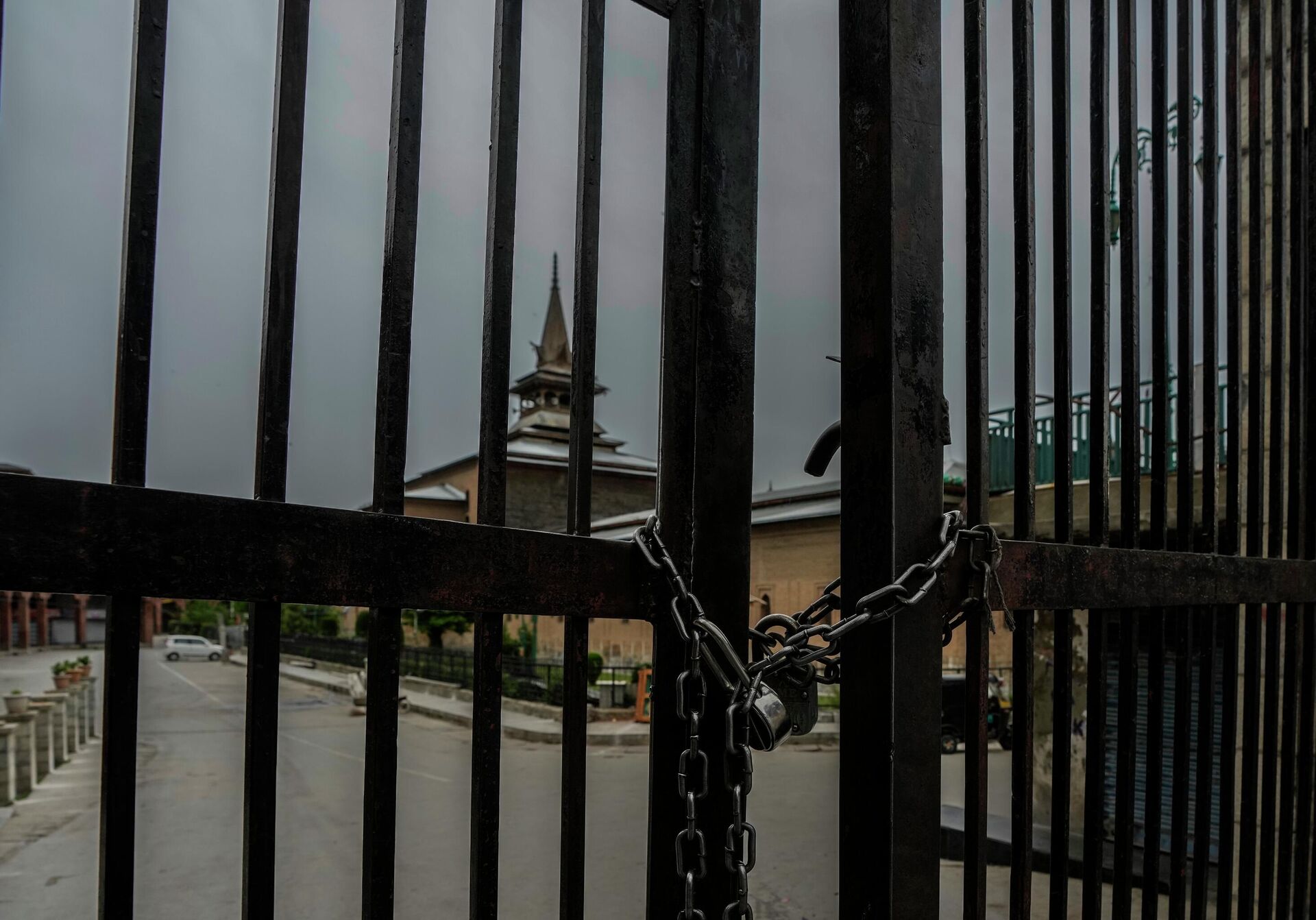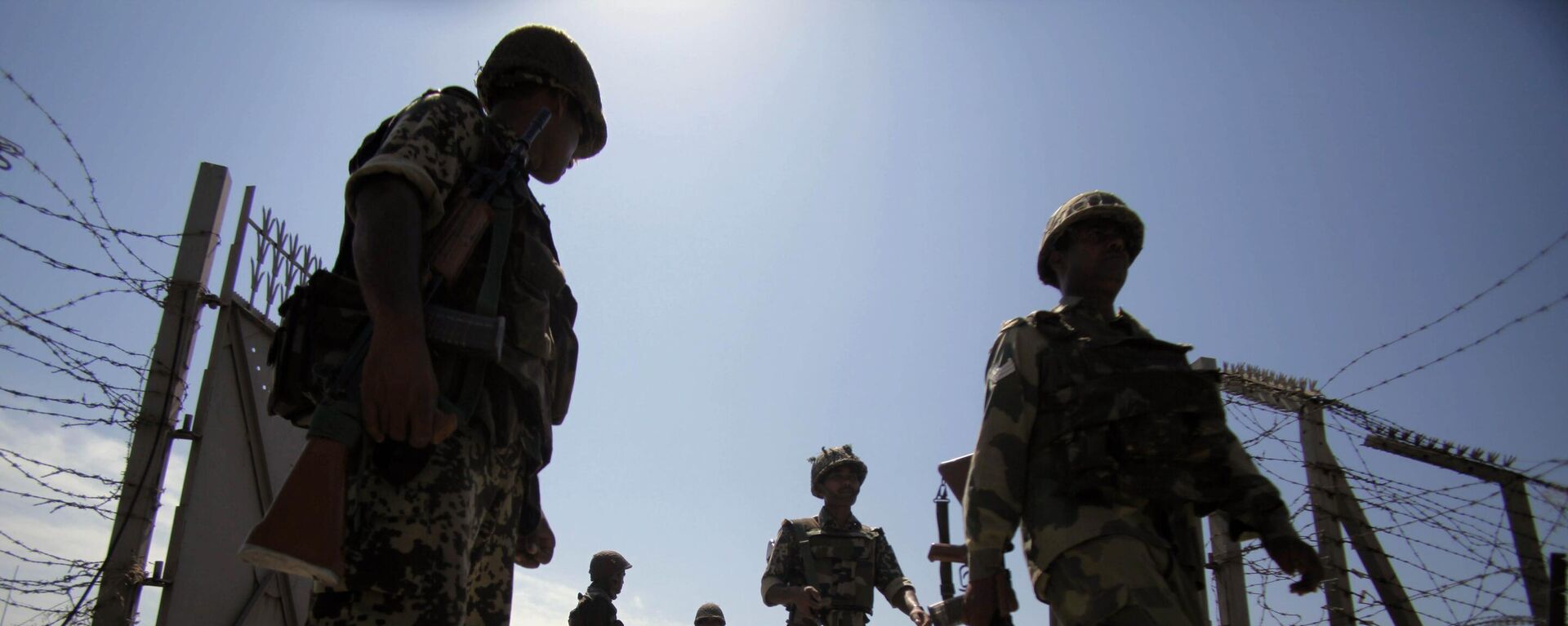https://sputniknews.in/20230802/why-india-revoked-special-status-of-kashmir-3343318.html
Why India Revoked Special Status of Kashmir
Why India Revoked Special Status of Kashmir
Sputnik India
On Tuesday, India’s highest court, began hearing petitions challenging government of India’s 2019 decision to revoke the semi-autonomous status of the Jammu and Kashmir region.
2023-08-02T18:47+0530
2023-08-02T18:47+0530
2023-08-02T19:21+0530
explainers
india
pakistan
jammu
kashmir valley
jammu and kashmir (j&k)
ladakh
bharatiya janata party (bjp)
indian national congress (inc)
indian army
https://cdn1.img.sputniknews.in/img/07e7/08/02/3348910_0:160:3072:1888_1920x0_80_0_0_1d496e004221193a819a98b211ed0a4e.jpg
A five-judge constitutional bench, headed by Chief Justice of India D.Y. Chandrachud, will be hearing daily arguments between the government of India and the petitioners, who will be arguing for the restoration of Kashmir’s autonomy.Over 20 petitions were filed in 2019 questioning the government's decision that led to the creation of the two centrally administered territories of Jammu and Kashmir, and Ladakh.What is Article 370?The roots of Article 370 lie in the Hereditary State Subject Order issued by Maharaja Hari Singh, the Hindu Dogra ruler of Jammu and Kashmir in 1927.Hari Singh wanted to introduce reforms in the state bureaucracy by restructuring it, and thus started to hire bureaucrats from other parts of British India, especially from Bengal.Kashmiri historians maintain that Kashmiri Pandits, who at the time were more educated and had a better representation than their Muslim counterparts in the bureaucracy, resisted the reforms, forcing the Maharaja to introduce the State Subject Order that essentially defined citizenship in Kashmir. The order disallowed non-citizens from taking government jobs or buying land in Kashmir.Article 370 made concurrence of the state indispensable for applicability of any Indian law over Kashmir.Why Was Article 370 Given to Kashmir?Demands for a separate nation by Indian Muslims grew stronger towards the end of British colonialism in the Indian sub-continent. The sub-continent was eventually divided into two countries - Indian and Pakistan. The division required areas with a Muslim majority to join Pakistan, and with Hindu majority to remain in India.However, the Maharaja of Kashmir remained undecided primarily because he was a Hindu, while Jammu and Kashmir was a Muslim-majority region.Before India gained independence, the country was divided into hundreds of princely states, including Junagadh and Hyderabad, which were Hindu-majority states led by a Muslim ruler. India argued for the incorporation of the two states into the Indian Union, as both had Hindu majorities.The Maharaja negotiated for a law on the lines of his 1927 order that defined citizenship of Kashmir. Thus, Article 370 came into force, before it was finally incorporated into the constitution of India by the Presidential Order of 1954.Is Kashmir Part of India or Pakistan?In 1947, the Maharaj’s decision to join India resulted in the first of the three wars fought between India and Pakistan over Kashmir. Tribesman from Pakistan managed to take control of a portion of Jammu and Kashmir, and the Maharaj’s decision allowed India to send its troops to repulse the Pakistani advance from taking complete control of Kashmir.How is Article 370 Connected to the Conflict in Kashmir?The disputed status of Jammu and Kashmir led to a separatist movement in the Indian-administered portions of the region during the late 1940s. The elections held in 1987 saw the emergence of a separatist alliance striving for Kashmir’s merger with Pakistan. However, the alliance’s defeat was attributed to the alleged rigging by its leaders, eventually culminating in a violent armed movement two years later. The Indian government has long accused Pakistan of backing the militants, which Islamabad strongly denies.The BJP, during the last three decades of insurgency, maintained that the removal of Kashmir’s autonomy and its complete assimilation and integration with India would put an end to the militancy. The BJP firmly believed that the special status of J&K allowed the flourishing of an ecosystem for separatists and militants to operate in Kashmir. The BJP continuously brought up the issue and demanded the removal of Kashmir’s autonomy, and its own voter base was heavily invested in the revocation agenda of the party.What is the Current Status of Jammu and Kashmir?The Indian National Congress (INC) has led federal governments for the overwhelming majority of the seven decades since independence. In 2014, the BJP came to power under the leadership of India’s current Prime Minister Narendra Modi.The last elected government in Jammu and Kashmir, which was an alliance between the region’s Peoples Democratic Party and BJP, fell over differences in June 2018. The state was ruled by a governor who was appointed by the federal government. The governor was the de facto head of the administration in J&K.The BJP won the next elections held in 2019, and months later, in August, decided to revoke Article 370. As the party held the majority of seats in the parliament, the bill to revoke Article 370, also known as the Jammu and Kashmir Reorganisation Act 2019, was passed without much hassle.The order stated that all the provisions of the Indian constitution applied to Jammu and Kashmir, which essentially meant that the separate constitution of Jammu and Kashmir stood revoked.Why India Revoked the Special Status of Jammu and KashmirThe Bharatiya Janata Party (BJP), which heads the federal government of India, has since its inception considered the removal of Kashmir’s special status as one of the key issues on its political agenda.Syama Prasad Mukherjee, who served as India’s first minister for industry and supply (now known as the Ministry of Commerce and Industry) in the Cabinet of Jawahar Lal Nehru (Indian freedom fighter and first prime minister), is considered by the BJP as having laid the foundation for the movement to revoke Kashmir’s autonomy.In 1950, Mukherjee had a falling out with Nehru following the Liaquat–Nehru Pact, a treaty between India and Pakistan that guaranteed minority rights and equal citizenship to minorities living in both countries.The pact also allowed the free movement of citizens and refugees to temporally return to their homes for disposing of their properties.Non-Kashmiri residents were required to have a special permit issued by the government of Jammu and Kashmir to visit the region, and in 1953 Mukherjee decided to defy the rule by entering the region. He was subsequently arrested. Mukherjee's health then deteriorated in custody, before he passed away. His death strengthened the demands to remove the special status, or Article 370.What Were the Effects of the Revocation of Article 370?The revocation triggered massive legal changes in the region. The article had restricted the application of several Indian laws in Kashmir. The right to own land and avail government jobs, which was exclusively reserved for residents, was opened up.Now any Indian citizen can buy land in Kashmir, a move that has triggered fears of “demographic change” among locals and resulted in the targeting of non-locals by militant groups. Similarly, Kashmir’s own constitution was abrogated, and the flag of the state was put out of use. The revocation has further enabled the federal government to apply any new law, introduced in the rest of India, to be applied in the Kashmir region.Locally in Kashmir, because of communications blackouts and curfews, violence was restricted. The political seniors in Kashmir suffered to some extent with the restriction of political activities. Globally, however, India did not face any major diplomatic issue over abrogating the special status of Kashmir: even if major Western powers did not unanimously support India’s decision, the country did not face any major backlash from them, and its time-tested allies have maintained that the issues are India's internal affairs.The federal government maintains that militant violence, protests, and separatist activities in Kashmir have vastly decreased after the decision to revoke Article 370.But in the newly created Ladakh union territory, an alliance arose demanding the special status and complete statehood for the region. In J&K, all major political parties also came under an umbrella alliance to demand the restoration of Kashmir’s autonomy.SC Hearing on Article 370 AbrogationSoon after the revocation move in 2019, more than 20 petitions were filed across India challenging the government’s decision. The petitions were filed by politicians, civil society members, former government employees, and lawyers.While the petitions were admitted in the Supreme Court, there have been no hearings on the matter in the last four years. Finally, the Supreme Court last month decided that a five-judge constitutional bench headed by Chief Justice of India D.Y. Chandrachud will hold daily hearings of the matter. The Supreme Court decided to club all the petitions together.
https://sputniknews.in/20230801/pakistan-says-ready-to-discuss-serious-matters-with-neighbor-3322271.html
india
pakistan
jammu
kashmir valley
jammu and kashmir (j&k)
ladakh
china
Sputnik India
feedback.hindi@sputniknews.com
+74956456601
MIA „Rossiya Segodnya“
2023
Azaan Javaid
https://cdn1.img.sputniknews.in/img/07e6/0c/08/19280_0:0:1080:1080_100x100_80_0_0_d0f3f10ac6f30fb5b9e5e21a5e2536ea.jpg
Azaan Javaid
https://cdn1.img.sputniknews.in/img/07e6/0c/08/19280_0:0:1080:1080_100x100_80_0_0_d0f3f10ac6f30fb5b9e5e21a5e2536ea.jpg
News
en_IN
Sputnik India
feedback.hindi@sputniknews.com
+74956456601
MIA „Rossiya Segodnya“
Sputnik India
feedback.hindi@sputniknews.com
+74956456601
MIA „Rossiya Segodnya“
Azaan Javaid
https://cdn1.img.sputniknews.in/img/07e6/0c/08/19280_0:0:1080:1080_100x100_80_0_0_d0f3f10ac6f30fb5b9e5e21a5e2536ea.jpg
current status of jammu and kashmir, why special status of kashmir is revoked, revocation of the special status of jammu and kashmir, jammu and kashmir, why jammu and kashmir given special status, kashmir conflict, jammu and kashmir issue, is kashmir part of india or pakistan, special status of kashmir is revoked, special status of jammu and kashmir, article 370 on jammu and kashmir, effects of removal of article 370 on jammu and kashmir
current status of jammu and kashmir, why special status of kashmir is revoked, revocation of the special status of jammu and kashmir, jammu and kashmir, why jammu and kashmir given special status, kashmir conflict, jammu and kashmir issue, is kashmir part of india or pakistan, special status of kashmir is revoked, special status of jammu and kashmir, article 370 on jammu and kashmir, effects of removal of article 370 on jammu and kashmir
Why India Revoked Special Status of Kashmir
18:47 02.08.2023 (Updated: 19:21 02.08.2023) On Tuesday, India’s highest court began hearing petitions challenging the government of India’s 2019 decision to revoke the semi-autonomous status of the Jammu and Kashmir region.
A five-judge constitutional bench, headed by Chief Justice of India D.Y. Chandrachud, will be hearing daily arguments between the government of India and the petitioners, who will be arguing for the restoration of Kashmir’s autonomy.
Over 20 petitions
were filed in 2019 questioning the government's decision that led to the creation of the two centrally administered territories of
Jammu and Kashmir, and
Ladakh.
The semi-autonomous status of the region was guaranteed by Article 370 of the Indian Constitution, which gave the Jammu and Kashmir region a separate constitution, a state flag, and autonomy in making administrative decisions.
The roots of Article 370 lie in the Hereditary State Subject Order issued by Maharaja Hari Singh, the Hindu Dogra ruler of Jammu and Kashmir in 1927.
Hari Singh wanted to introduce reforms in the state bureaucracy by restructuring it, and thus started to hire bureaucrats from other parts of British India, especially from Bengal.
Kashmiri historians maintain that
Kashmiri Pandits, who at the time were more educated and had a better representation than their Muslim counterparts in the bureaucracy, resisted the reforms, forcing the Maharaja to introduce the State Subject Order that essentially defined citizenship in Kashmir. The order disallowed non-citizens from taking government jobs or buying land in Kashmir.
Article 370 made concurrence of the state indispensable for applicability of any Indian law over Kashmir.
It envisaged that “whatever modifications, amendments or exceptions become necessary either to Article 370 or to any other Articles in the constitution of India in their application to Jammu and Kashmir State were subject to the decision of that Assembly”. Besides the constitutional guarantees offered by Article 370, the provision also restricted non-residents from buying land or availing government jobs in Kashmir.
Why Was Article 370 Given to Kashmir?
Demands for a separate nation by Indian Muslims grew stronger towards the end of
British colonialism in the Indian sub-continent.
The sub-continent was eventually divided into two countries - Indian and Pakistan. The division required areas with a Muslim majority to join Pakistan, and with Hindu majority to remain in India.
However, the Maharaja of Kashmir remained undecided primarily because he was a Hindu, while Jammu and Kashmir was a Muslim-majority region.
Before India gained independence, the country was divided into hundreds of princely states, including Junagadh and Hyderabad, which were Hindu-majority states led by a Muslim ruler. India argued for the incorporation of the two states into the Indian Union, as both had Hindu majorities.
But Pakistan, recently created by the British, laid claim to the majority-Muslim part of Kashmir along its border. When tribesmen from Pakistan crossed over into Kashmir to take control of the region, the Maharaja signed the temporary Instrument of Accession with India under the condition that Kashmir would retain political and economic sovereignty, while its defence and external affairs would be handled by India.
The Maharaja negotiated for a law on the lines of his 1927 order that defined citizenship of Kashmir. Thus, Article 370 came into force, before it was finally incorporated into the constitution of India by the Presidential Order of 1954.
Is Kashmir Part of India or Pakistan?
In 1947, the Maharaj’s decision to join India resulted in the first of the three wars fought between India and Pakistan over Kashmir.
Tribesman from Pakistan managed to take control of a portion of Jammu and Kashmir, and the Maharaj’s decision allowed India to send its troops to repulse the Pakistani advance from taking complete control of Kashmir.
A ceasefire established the Line of Control, with both countries holding on to the portions of Kashmir controlled by their armies at that point of the history. Furthermore, a war between India and China in 1962 led to the former taking control of a huge area in the treacherous Ladakh region’s eastern side, which led to the creation of a disputed border between the two countries known as the Line of Actual Control. India and Pakistan claim the region of Jammu and Kashmir in its entirety. The matter was taken to the United Nations by India, where the region’s status remains disputed.
How is Article 370 Connected to the Conflict in Kashmir?
The disputed status of Jammu and Kashmir led to a separatist movement in the Indian-administered portions of the region during the late 1940s.
While the initial movement was largely peaceful, instances of violence erupted from time to time during the next four decades. The movement gained only limited traction among the majority of people, as the region enjoyed autonomy over key affairs. However, in 1989, an anti-India insurgency erupted after allegations of the government of India and Jammu and Kashmir rigging the election surfaced.
The elections held in 1987 saw the emergence of a separatist alliance striving for Kashmir’s merger with Pakistan. However, the alliance’s defeat was attributed to the alleged rigging by its leaders, eventually culminating in a violent armed movement two years later. The Indian government has long accused Pakistan of
backing the militants, which Islamabad strongly denies.
The BJP, during the last
three decades of insurgency, maintained that the removal of Kashmir’s autonomy and its complete assimilation and integration with India would put an end to the militancy. The BJP firmly believed that the special status of J&K allowed the flourishing of an ecosystem for separatists and militants to operate in Kashmir. The BJP continuously brought up the issue and demanded the removal of Kashmir’s autonomy, and its own voter base was heavily invested in the revocation agenda of the party.
What is the Current Status of Jammu and Kashmir?
The
Indian National Congress (INC) has led federal governments for the overwhelming majority of the seven decades since independence. In 2014, the BJP came to power under the leadership of India’s current Prime Minister Narendra Modi.
The last elected government in Jammu and Kashmir, which was an alliance between the region’s Peoples Democratic Party and BJP, fell over differences in June 2018. The state was ruled by a governor who was appointed by the federal government. The governor was the de facto head of the administration in J&K.
The BJP won the next elections held in 2019, and months later, in August, decided to revoke Article 370. As the party held the majority of seats in the parliament, the bill to revoke Article 370, also known as the Jammu and Kashmir Reorganisation Act 2019, was passed without much hassle.
On 5 August 2019, Indian Home Minister Amit Shah announced in the upper house of the Indian parliament that his government had abrogated Article 370. Shah announced that the president of India had issued the Constitution (Application to Jammu and Kashmir) Order, 2019 under Article 370, superseding the Jammu and Kashmir constitution, which until that day had been incorporated in the Indian constitution.
The order stated that all the provisions of the Indian constitution applied to Jammu and Kashmir, which essentially meant that the separate constitution of Jammu and Kashmir stood revoked.
As a result, the state of Jammu and Kashmir was divided into the two centrally governed union territories of Jammu and Kashmir and Ladakh. The special status of Kashmir was officially removed.
Why India Revoked the Special Status of Jammu and Kashmir
The Bharatiya Janata Party (BJP), which heads the federal government of India, has since its inception considered the removal of Kashmir’s special status as one of the key issues on its political agenda.
Syama Prasad Mukherjee, who served as India’s first minister for industry and supply (now known as the Ministry of Commerce and Industry) in the Cabinet of Jawahar Lal Nehru (Indian freedom fighter and first prime minister), is considered by the BJP as having laid the foundation for the movement to revoke Kashmir’s autonomy.
In 1950, Mukherjee had a falling out with Nehru following the Liaquat–Nehru Pact, a treaty between India and Pakistan that guaranteed minority rights and equal citizenship to minorities living in both countries.
After the end of British colonialism, the division of the Indian sub-continent triggered the largest migration of people: Muslim minorities in India moved to Pakistan, while the Hindu and Sikh minorities of Pakistan moved to India.
The pact also allowed the free movement of citizens and refugees to temporally return to their homes for disposing of their properties.
Mukherjee protested the pact and went on to form the Bharatiya Jana Sangh, the predecessor to the BJP: he was opposed to J&K having its own constitution and gave the slogan of "Ek desh mein do Vidhan, do Pradhan aur Do Nishan nahi chalenge" ("A single country can't have two constitutions, two prime ministers, and two national emblems").
Non-Kashmiri residents were required to have a special permit issued by the government of Jammu and Kashmir to visit the region, and in 1953 Mukherjee decided to defy the rule by entering the region. He was subsequently arrested.
Mukherjee's health then deteriorated in custody, before he passed away. His death strengthened the demands to remove the special status, or Article 370.
What Were the Effects of the Revocation of Article 370?
The article had restricted the application of several Indian laws in Kashmir. The right to own land and avail government jobs, which was exclusively reserved for residents, was opened up.
Now any Indian citizen can buy land in Kashmir, a move that has triggered fears of
“demographic change” among locals and resulted in the targeting of
non-locals by militant groups.
Similarly, Kashmir’s own constitution was abrogated, and the flag of the state was put out of use. The revocation has further enabled the federal government to apply any new law, introduced in the rest of India, to be applied in the Kashmir region.
Locally in Kashmir, because of communications blackouts and curfews, violence was restricted. The political seniors in Kashmir suffered to some extent with the
restriction of political activities.
Globally, however, India did not face any major diplomatic issue over abrogating the special status of Kashmir: even if major Western powers did not unanimously support India’s decision, the country did not face any major backlash from them, and its time-tested allies have maintained that the issues are India's internal affairs.
Still, both China and Pakistan opposed the move, citing the disputed status of Jammu and Kashmir. The diplomatic ties between India and Pakistan, which suffered massively in the aftermath of the February 2019 suicide bombing that killed 40 Indian troopers, were completely suspended after August 2019.
The federal government maintains that militant violence, protests, and separatist activities in Kashmir have vastly decreased after the decision to revoke Article 370.
But in the newly created Ladakh union territory, an alliance arose demanding the special status and complete statehood for the region. In J&K, all major political parties also came under an umbrella alliance to demand the restoration of Kashmir’s autonomy.
SC Hearing on Article 370 Abrogation
Soon after the revocation move in 2019, more than 20 petitions were filed across India challenging the government’s decision.
The petitions were filed by politicians, civil society members, former government employees, and lawyers.
While the petitions were admitted in the Supreme Court, there have been no hearings on the matter in the last four years.
Finally, the Supreme Court last month decided that a five-judge constitutional bench headed by Chief Justice of India D.Y. Chandrachud will hold daily hearings of the matter. The Supreme Court decided to club all the petitions together.







